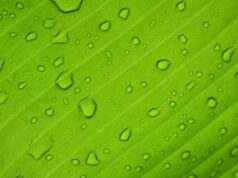Tephras — rock fragments and particles ejected by a volcanic eruption.
Credit: Image courtesy of University of Leeds
Shrinking glacier cover could lead to increased volcanic activity in Iceland, warn scientists.
A new study, led by the University of Leeds, has found that there was less volcanic activity in Iceland when glacier cover was more extensive and as the glaciers melted volcanic eruptions increased due to subsequent changes in surface pressure.
Find your dream job in the space industry. Check our Space Job Board »
Dr Graeme Swindles, from the School of Geography at Leeds, said: “Climate change caused by humans is creating rapid ice melt in volcanically active regions. In Iceland, this has put us on a path to more frequent volcanic eruptions.”
The study examined Icelandic volcanic ash preserved in peat deposits and lake sediments and identified a period of significantly reduced volcanic activity between 5,500 and 4,500 years ago. This period came after a major decrease in global temperature, which caused glacier growth in Iceland.
The findings, published in the journal Geology, found there was a time lag of roughly 600 years between the climate event and a noticeable decrease in the number of volcanic eruptions. The study suggests that perhaps a similar time lag can be expected following the more recent shift to warmer temperatures.
Iceland’s volcanic system is in process of recovering from the ‘Little Ice Age’ — a recorded period of colder climate roughly between the years 1500 to 1850. Since the end of the Little Ice Age, a combination of natural and human caused climate warming is causing Icelandic glaciers to melt again.
Dr Swindles said: “The human effect on global warming makes it difficult to predict how long the time lag will be but the trends of the past show us more eruptions in Iceland can be expected in the future.
“These long term consequences of human effect on the climate is why summits like COP are so important. It is vital to understand how actions today can impact future generations in ways that have not been fully realised, such as more ash clouds over Europe, more particles in the atmosphere and problems for aviation. ”
Icelandic volcanism is controlled by complex interactions between rifts in continental plate boundaries, underground gas and magma build-up and pressure on the volcano’s surface from glaciers and ice. Changes in surface pressure can alter the stress on shallow chambers where magma builds up.
Study co-author, Dr Ivan Savov, from the School of Earth & Environment at Leeds, explains: “When glaciers retreat there is less pressure on Earth’s surface. This can increase the amount of mantle melt as well as affect magma flow and how much magma the crust can hold.
“Even small changes in surface pressure can alter the likelihood of eruptions at ice-covered volcanos.”
Story Source: Materials provided by University of Leeds Note: Content may be edited for style and length.
Journal Reference:
Graeme T. Swindles, Elizabeth J. Watson, Ivan P. Savov, Ian T. Lawson, Anja Schmidt, Andrew Hooper, Claire L. Cooper, Charles B. Connor, Manuel Gloor, Jonathan L. Carrivick. Climatic control on Icelandic volcanic activity during the mid-Holocene. Geology, 2017; DOI 10.1130/G39633.1











